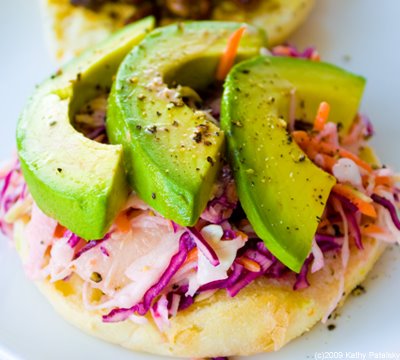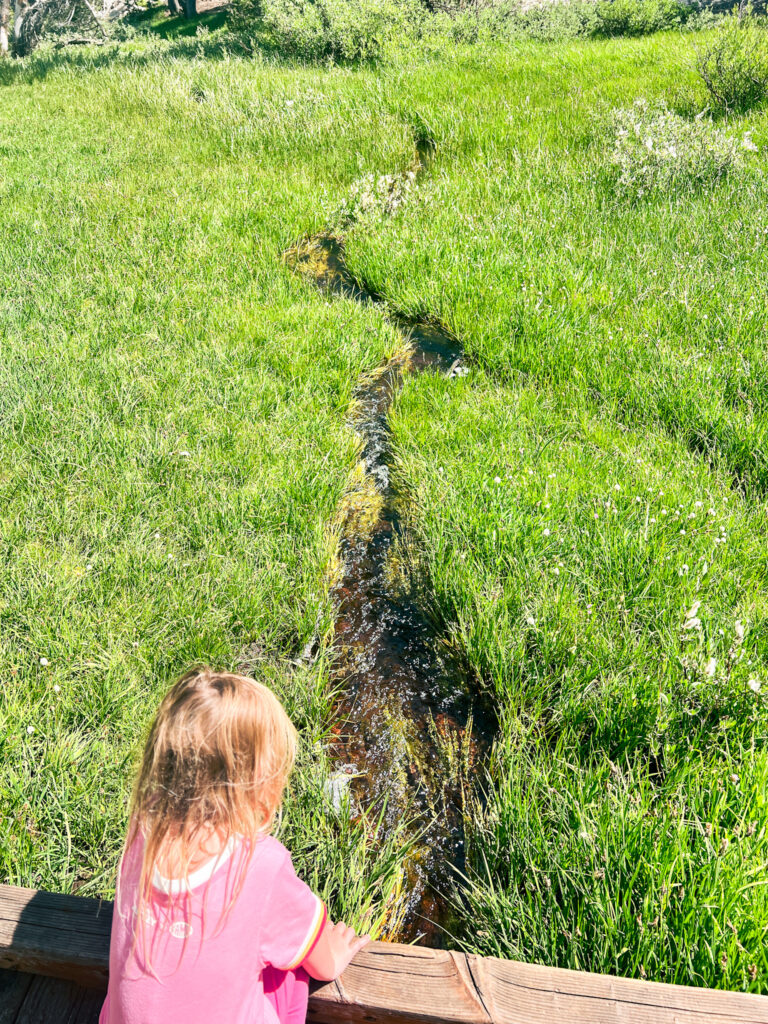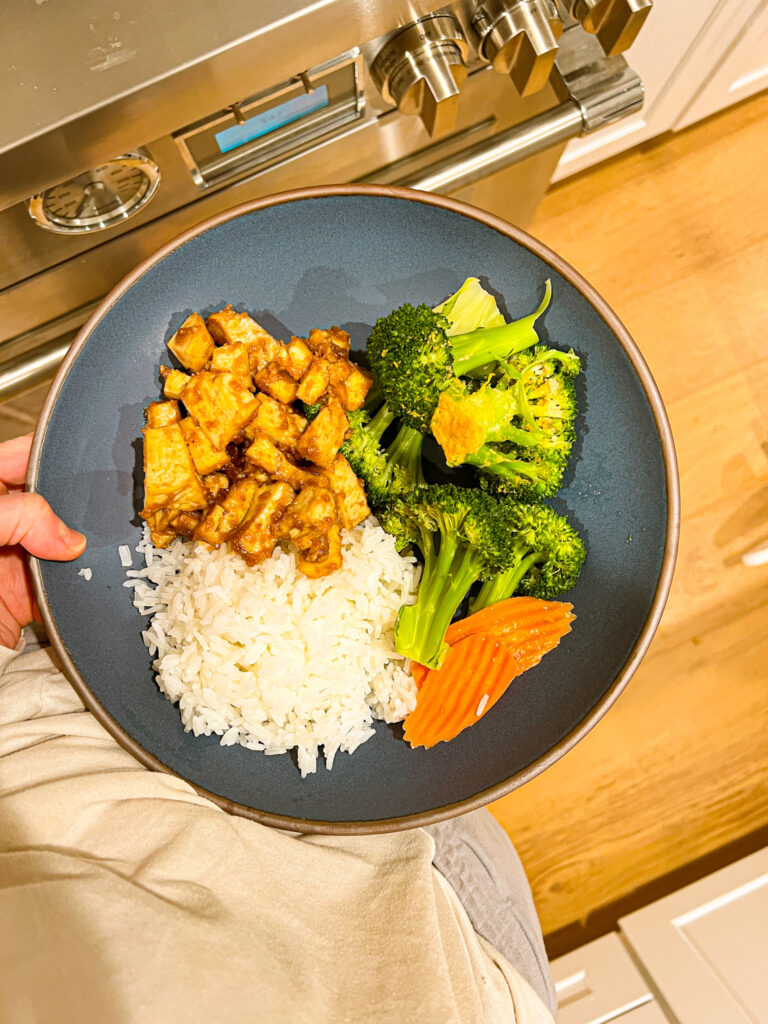
Fat. It's a fascinating topic in nutrition. And I'm not talking about body fat, but the kind you eat. Before I begin my story, lets go over a few nutrition basics of fat.
Three types of Fats.
Monounsaturated Fats. "Good Fat"
Saturated Fats. "Bad Fat."
Polyunsaturated fats. "Not as good as Mono fats"
Cholesterol: HDL=good cholesterol. LDL=bad cholesterol.
*I call HDL the "happy" cholesterol to help me remember.
What is recommended:
AHA Guidelines:
* Limit total fat intake to less than 25–35 percent of your total calories each day;
* Limit saturated fat intake to less than 7 percent of total daily calories;
* Limit trans fat intake to less than 1 percent of total daily calories;
* The remaining fat should come from sources of monounsaturated and polyunsaturated fats such as nuts, seeds, fish and vegetable oils; and
* Limit cholesterol intake to less than 300 mg per day, for most people. If you have coronary heart disease or your LDL cholesterol level is 100 mg/dL or greater, limit your cholesterol intake to less than 200 milligrams a day.
How Much for Me? Everyone is different, so the exact amount of fat that is perfect for your body will probably be different than your neighbors. The AHA gives this example: "A sedentary female who is 31–50 years old needs about 2,000 calories each day. Therefore, she should consume less than 16 g saturated fat, less than 2 g trans fat and between 50 and 70 grams of total fat each day (with most fats coming from sources of polyunsaturated and monounsaturated fats, such as fish, nuts, seeds and vegetable oils)."
How Much is 50-70 grams? Well, that is two avocados or one avocado (31 grams of fat) plus 1-3 tablespoon of olive oil (14 grams of fat per Tbsp). To put this in perspective of the typical 'unhealthy' American diet...One Mcdonald's Cheeseburger has 6 grams of saturated fat, 12 grams of total fat and 300 calories.
The above mentioned 2000 calorie diet, should then have a maximum intake of about 15.5 grams of saturated fat. However, the lower your diet is in saturated fat the better. So if you ate one avocado (4 grams saturated fat) and 2 Tbsp's Olive Oil (2 grams Saturated fat per Tbsp), you'd have 8 grams of saturated fat, way under that Max amount. (FYI, 15.5 grams of saturated fat is about two McDonald's cheeseburgers worth.) I'm glad I stopped eating those years ago.
Saturated Fat Sidenote: *see coconut oil note at end of this post.
Cholesterol and Fat.
The American Heart Association Says: "Knowing which fats raise LDL cholesterol and which ones don't is the first step in lowering your risk of heart disease. In addition to the LDL produced naturally by your body, saturated fat, trans-fatty acids and dietary cholesterol can also raise blood cholesterol. Monounsaturated fats and polyunsaturated fats appear to not raise LDL cholesterol; some studies suggest they might even help lower LDL cholesterol slightly when eaten as part of a low-saturated and trans-fat diet."
Now that we are on the same playing field of what the experts say, this is my story...
Avocados, Almonds and Olive Oil for this California Girl. I grew up eating avocados, almonds and olive oil. Easy to do when you are from California. One high-fat Avocado has 4 grams of protein, 15 grams carbohydrate and 31 grams of fat. However, avocados contain mostly good monounsaturated fat (19 grams in 1 avocado). Almonds are similar. They contain 163 calories per ounce, 14 grams of fat and around 9 grams of monounsaturated fats. Only 1 gram per ounce of saturated fat. Olive oil is similar as well. Per tablespoon it has 14 grams of fat total, 119 calories, about 2 grams of saturated fat and 10 grams of monounsaturated fats. All three of these foods are locally available in California. And all three are foods I ate a lot of as a child.
Society's Influence. Impressionable Minds. Somewhere along the road of youth I started obsessively reading nutrition labels, glancing at Cosmopolitan Magazine and Model-Splashed Clothing Catalogues, believing skinny celebrity propaganda and I also had one too many perfume ads plastered across my bedroom wall. The dieting propaganda and lack of positive female images in the media was enough to make anyone, including myself, a little confused about what 'healthy' meant. "Low-Fat" was in, according to the covers of magazines, and I took their advice a bit too far. I started to second-guess anything with the word 'fat' associated with it. 20 grams of fat in my large side of guacamole? Uh-oh.
Fat Phobia. In high school, like many girls, I wanted to 'lose a few pounds' and I was convinced that I was eating too much fat. Bad idea for someone with a perfectly healthy weight and happy disposition. Thus for a few years I turned into a true fat-phobic person. I'd beg my mom not to put ANY olive oil in my steamed Kale and Garlic. I'd ask for dressing on the side of all my salads. I banned cheese and only ate fat free frozen yogurt. High fat ice cream was out. I banned my favorite: guacamole and opted to only eat spoonfuls of fat free salsa when my friends and I dined out at Mexican Restaurants. I banned the tortilla chips as well. Maybe 2-3 per bowl of salsa. Never a fan of butter, I'd make sure my toast was dry with only a bit of sugar-free all fruit jam, and any foods that appeared greasy, cheesy or oily got a thorough wipe-down from my napkin to sop up all the excess grease before I dared eat it. Yup, I was a fat-phobe. A teenage girl phase indeed.
Fat-Phobia Pays its Price. It's true that while I was cutting back on calories and just about banning all fats from my diet I lost a few pre-college pounds. Whoopi. (Can you hint the sarcasm here, I hope?) But what I didn't realize was that this fat-free eating was wrecking serious havoc on my body, including my cholesterol levels, mood and even God forbid-my hair, nails and skin! Gasp.
Fat-Free Toll. So during those few years of fat-phobia some scary things started happening. Yes, I lost weight-at first, but I also lost my good mood. Eating a high protein/carb diet left me incredibly cranky. When I'd eat a big snack before tennis practice I'd realize that it would quickly get burned off (with no fats to slow down digestion) so I'd be very susceptible to mood swing highs and lows. I'd eat, get a huge spike of energy and quickly fall flat. Crankiness and lethargy ensued. And note that the only thing I was doing to my diet was cutting out large chunks of fat. I had dry sin, my childhood eczema resurfaced and my hair and nails were bone dry. This was not the beauty-forward diet I was seeking.
College Cholesterol Wake-Up Call. It wasn't until college that my fat-free phobia really hit me. It was the results from my routine first-year of-college student physical. You'd think a healthy weight, fat-free vegetarian would have fabulous levels of everything right? I expected everything to be perfect, but I was shocked when one of the blood tests showed that I had less than stellar cholesterol readings and pitiful HDL numbers-my good cholesterol was incredibly low. Not good. Especially for someone who has a genetic family trait of high cholesterol.
What to do When Faced with Poor Test Results? When you get a medical test result that is poor you have two options of action: One, nothing. Two, something. Being me, I chose to do something the best I could. I added a lot of avocados, almonds and olive oil back to my diet. I decided to give it a try. The first thing I noticed was that my mood improved. My hunger was less erratic and my dry skin eczema disappeared. Yay! But the biggest change was that I was happier. I wasn't depriving myself anymore and the increased fat in my diet really helped even out my energy levels - which is huge for a new college student. And guess what, the next semester, my blood test showed that my HDL levels skyrocketed. My doctor was very impressed, and so was I.
My Story. This is my story. I am a one-time fat-phobe who will never go back to that state of mind, or that fat-free diet. But for me, this now comes quite naturally. As a vegan, I find it very easy to avoid 'bad' saturated fats from animal products, and find it easy to include various healthy fats from nuts, avocados and olive oil to my diet. No, I don't go overboard. I still watch my calories and total fat on a daily basis. If you want to be healthy you really have to be aware of how much of what is entering your body. However, for me, fat deprivation is no way to live. If I want to eat an entire avocado in my salad, I will and then I will simply not crave any more high-fat foods that day. So all in all I've found that my body regulates itself quite nicely. You'll probably find that as well. If you eat a meal higher in olive oil and nuts and healthy fats in general, you'll feel full for a while and maybe only need a few more carbs and proteins to get you through the rest of the day.
Fat-Fear No More. Whenever I am around teenage girls or new dieters of any age, the first trend I notice in their meals is having a fear of fat. No matter what the food, if it has fat in it they will cringe and run. True they don't have any problem with drinking two gallons of artificially colored sports beverages or high sugar sweets like candy and fat free frozen yogurt, but a slice of avocado and they freak out. I know these girls well because I was one. But hopefully, they will learn that true healthy eating doesn't start by banning certain foods from your diet. Healthy eating really starts by adding healthy foods to your diet and eventually you'll lose interest in those unhealthy foods. Why? Simply because you'll feel better eating the good stuff.
Me vs. You. Everyone's story is different. Everyone's body and chemistry is different-especially when it comes to cholesterol. I know plenty of skinny folks with high cholesterol and even a few overweight folks with average or healthy levels of cholesterol. But this story is what worked for me. Getting rid of my fat-phobia improved my health greatly. And if you are a fat-phobic person or know any teenagers with that 'fat is bad' mentality, I encourage you to forward them this post. They may not change the way they eat, but at least they will hear my story. They will see that I successfully added healthy fats back into my diet and guess what, I didn't gain weight. In fact, when I first made the switch away from fat-free eating, I lost a lot of weight. And I lost that horrible feeling of deprivation. This is my story, and I'm glad to share it with you.
*note: I'm not even going to get into coconut oil right now. But you may notice that coconut oil is labeled as high in saturated fat. This type of oil is still controversial and so I will not bring it into this discussion.










Sophie says
Hi
I found this post really interesting as everyone automatically assumes 'fat' is bad. I'm guilty of this myself, even though I'm doing a biology degree at uni and know full well the necessity of fats in our bodies.
I believe people need a greater degree of nutritional education in schools, as some people have such incorrect perceptions of food that they can't help but eat badly.
On another note, excellent blog! I'm not vegan (just vegetarian) but it's so interesting to discover ways of cooking without using any animal products 😀
Phileda says
I started my vegan diet in my stupid fat-phobic teenage phase. The idea that "animal-derived fats" are inferior to all other fats was presented to me as an important reason to make the switch to a vegan diet. However, I have seen no evidence to back up this claim. Your article, which I really enjoyed reading, also makes this same claim. Can you explain this claim for me? I look forward to hearing your answer. I really love this blog!
Kirby! says
I am right there with you. Growing up, the first thing I would look at on any nutrition label was the fat content. Now, I am totally gaga for avocados, almonds, and olive oil!! All three are always in stock in my kitchen. It has been a long journey to embrace the good fats, but I'm so glad I did. Long live Omega 3s!!
Stacy says
There actually is very little research showing saturated fat is bad for you. A few poorly done studies, that have been debunked in my opinion, have led to the popular misconception that saturated fat = bad. It is very sad. I make a point to eat saturated fat every day in the form of organic dairy from grass fed cows, grass fed/pastured meat, and coconut oil. The reason for this is simple - these foods have been part of the human diet for over 10,000 years. But vegetable oils and, shortenings and margarines have only been around about 150 years. As for the first recorded heart attack? A little less than 100 years ago. And the incidence of heart attacks keeps going up as we eliminate and reduce more and more of these traditional fat sources. I eat as much olive oil, dairy, avocado, coconut oil, and meat/fish as I want and never worry about eating too much fat. (granted, I only have red meat about once a week max most weeks, same with chicken and fish, and I rarely have all 3 in the same week, but not because I'm afraid; it comes down to money and preparation time issues.) I avoid soybean oil, cottonseed oil, safflower oil, and any non traditional oil.
By the way, bacon is mostly polyunsaturated, NOT saturated. So according to the mainstream approach to fats, bacon isn't so bad. Of course, according to the guidelines I use - is it a traditional food source - it is just fine.
Anyway, overall, I'm glad you are over your fat is bad stage. Fat is good for your brain, your moods (as you found out), your lungs, all kinds of stuff. And I'd highly encourage you to look into coconut oil. Coconut oil is so good for you and has additional benefits, like helping your immune system.
Cate says
I was incredibly fat-phobic for awhile as well, and it definitely took its toll. It's amazing to see how my body can regulate itself without me having to agonize over every calorie or gram of fat.
Although I keep a log of what I eat every day, I don't count calories or fat grams anymore, and it's made me a much saner person. I definitely enjoy my almonds and avocados, too!
Thank you so much for this post, and someday I'd love to hear your thoughts on coconut oil. I'm now going to go see what I can piece together about it from all the information out there!
Maggie Madison says
Thanks for clearing all this up. I remember in high school, watching an interview with Sally Fields, where she proudly told the reporter, "I eat absolutely no fat."
Wow. Now I just saw her on a show and she looks amazing, so I'm sure she has rethought her diet = )
Atsuko says
thanks for this post Kathy!!! I really enjoyed reading about it. I always was mystified by the "good" and "bad" fats. I love love avocados and nuts! 🙂
Kristie says
Great post (as usual)! I'd love for you to give your opinion on the coconut oil issue in a future post. Controversial indeed, but oh so tasty 🙂
Jennifer says
Great info and post! Ohhhh how I love fats!! (healthy ones!) My mother in law is still stuck in the "no fat" era... she cant get over the amounts of nut butters, avocados and olive oil I use!
Melissa says
I think it's quite sad to label saturated as bad. If you do a little research you'll find that there are several types of saturated fats and the type found in plants like coconut differs from those found in a stack of bacon. Coconut is a staple food for many healthy native peoples.
I personally switched from getting most fat from almonds and avocados to coconut when I was having some health problems. Almonds and avocados are great, but science is showing that too much omega-6 compared to omega-3 might be the real danger. It's hard to get enough omega-3 on a vegan diet and lots of omega-6 can drown it out. Thankfully, coconut is not only healthy, but it also doesn't unbalance that particular ratio.
But besides that little nit pick, great post! I see too many people failing on healthy diets because they restrict fat.